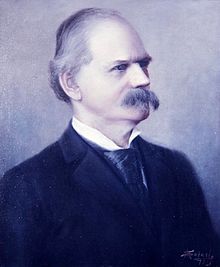John Marshall Stone
This article needs additional citations for verification. (December 2013) |
John Marshall Stone | |
|---|---|
 | |
| 31st and 33rd Governor of Mississippi | |
| In office March 29, 1876 – January 2, 1882 | |
| Lieutenant | Vacant (1876–1878) William H. Sims (1878–1882) |
| Preceded by | Adelbert Ames |
| Succeeded by | Robert Lowry |
| In office January 13, 1890 – January 20, 1896 | |
| Lieutenant | M. M. Evans |
| Preceded by | Robert Lowry |
| Succeeded by | Anselm J. McLaurin |
| Member of the Mississippi State Senate | |
| In office 1869–1876 | |
| Personal details | |
| Born | April 30, 1830 Milan, Tennessee |
| Died | March 26, 1900 (aged 69) Holly Springs, Mississippi |
| Political party | Democratic |
| Signature | |
John Marshall Stone (April 30, 1830 – March 26, 1900) was an American politician from
Early life
Born in Milan, Tennessee, Stone was the son of Asher and Judith Stone, natives of Virginia who were part of the migration to the west. He did not attend college since his family was fairly poor, but he studied a great deal and eventually taught school. He lived in Jacks Creek, Tennessee before moving to Tishomingo County, Mississippi in 1855.[2] Stone became a station agent at Iuka when the Memphis and Charleston Railroad opened.
American Civil War
With the outbreak of the
Political career

At the end of the war, Stone returned to Tishomingo County. He was elected mayor and treasurer. In 1869, he won a race to become state senator, winning re-election in 1873. State elections were marked by fraud and violence; the Red Shirts, a paramilitary group, worked to disrupt and suppress black voting and turned Republicans out of office. After Governor Adelbert Ames resigned in 1876, Stone, who was president pro tempore of the Mississippi State Senate at that time, served as the acting governor.
In the
Later life
Following his term as governor, in 1899, Stone accepted a position as the 2nd President of Mississippi A&M (now Mississippi State University) in Starkville. Stone died in Holly Springs, Mississippi, in 1900, at 69. He is buried at Oak Grove Cemetery in Iuka, Mississippi.[4][5][6]
Personal life
After the war, Stone married Mary G. Coman in 1872. The couple had two children who died young. They adopted three children of John's brother and raised them as their own.
Legacy and honors
- In 1916 Stone County, Mississippi, was named in his honor posthumously.
- Stone Boulevard at Mississippi State is named for him.
- The John M. Stone Cotton Mill in Starkville was formerly named in his honor. However, it was renamed the E.E. Cooley Building after being purchased by Mississippi State University (MSU) in 1965. This building was used for many years to house the university's physical plant.[7] The building reopened in 2015 as an event center.[8]
See also
- List of governors of Mississippi
- List of lieutenant governors of Mississippi
- List of presidents of Mississippi State University
References
- ^ Stone, John M. (March 11, 1890). "Proclamation". Jackson Mississippi: Executive Office of the State of Mississippi. Archived from the original on October 2, 2015. Retrieved August 5, 2015.
- ^ Chester County, TN Archived November 16, 2018, at the Wayback Machine Retrieved 2018-04-21.
- ^ a b c Michael Perman, Struggle for Mastery: Disfranchisement in the South, 1888–1908 (2000), ch 4
- ^ Political Graveyard entry
- ^ Mississippi Governor John Marshall Stone
- ^ John Marshall Stone: Thirty-first and Thirty-third Governor of Mississippi: 1876–1882; 1890–1896 Archived October 9, 2010, at the Wayback Machine
- ^ E.E. Cooley Building (John M. Stone Cotton Mill) Archived November 3, 2013, at the Wayback Machine
- ^ "History of the Mill". The Mill at MSU. Retrieved February 11, 2022.


